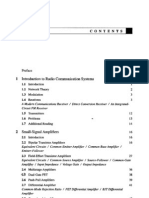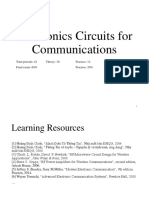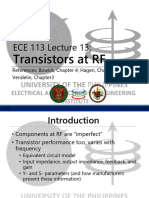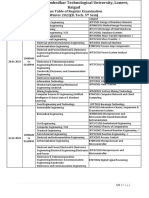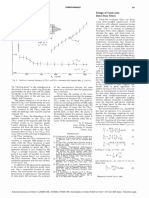0% found this document useful (0 votes)
27 views18 pagesCom Week11
This document summarizes key topics from Chapter 8 of a communications systems textbook. It discusses different types of power amplifiers used in radio transmitters, including class C, D, E, F, and S amplifiers. It also describes linear broadband power amplifiers that use techniques like feedforward amplification and adaptive predistortion. Finally, it covers impedance-matching networks and transformers used to optimize power transfer in transmitters, as well as two example transmitter circuit designs.
Uploaded by
kerimmygttCopyright
© © All Rights Reserved
We take content rights seriously. If you suspect this is your content, claim it here.
Available Formats
Download as PDF, TXT or read online on Scribd
0% found this document useful (0 votes)
27 views18 pagesCom Week11
This document summarizes key topics from Chapter 8 of a communications systems textbook. It discusses different types of power amplifiers used in radio transmitters, including class C, D, E, F, and S amplifiers. It also describes linear broadband power amplifiers that use techniques like feedforward amplification and adaptive predistortion. Finally, it covers impedance-matching networks and transformers used to optimize power transfer in transmitters, as well as two example transmitter circuit designs.
Uploaded by
kerimmygttCopyright
© © All Rights Reserved
We take content rights seriously. If you suspect this is your content, claim it here.
Available Formats
Download as PDF, TXT or read online on Scribd
/ 18



